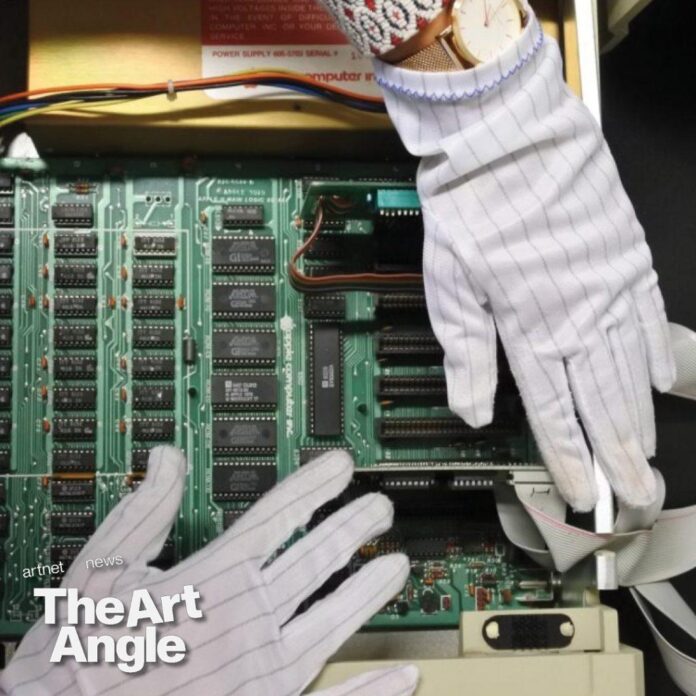Welcome to the Art Angle, a podcast from Artnet News that delves into the places where the art world meets the real world, bringing each week’s biggest story down to earth. Join us every week for an in-depth look at what matters most in museums, the art market, and much more, with input from our own writers and editors, as well as artists, curators, and other top experts in the field.
Today we’re going to be talking about a relatively new and novel career within art, one you might not have thought of because it didn’t even really exist until recently. And that is… the conservator of new media art.
Anyone who has been to a museum recently will know that contemporary art comes in a dizzying array of forms, an artist today is as likely to be working with computer code or cutting together video in Adobe Premiere Pro as they are to be toiling in front of the easel. At least since the 1960s, artists who want to stay relevant have felt the need to explore the latest technology, even as simply what counts as the latest technology changes at a faster and faster pace.
This churn of experiments with art and technology is now old enough that it has its own history, which is where the field of new media conservation comes in. Artnet News reporter Jo Lawson-Tancred recently wrote a feature exploring the field and talking to a variety of key figures within it. A particularly fascinating aspect of the subject is how what seem like literally technical questions open onto much bigger debates about what art even is and what it even means to preserve it.
You’d think that art from our near past would be easier to grapple with. It is one of the symptoms of the sped up nature of our times that it might actually pose more challenges than art from the more remote past. Jo’s essay even seems to suggest that the problem is only getting more intense even as this whole new specialist field develops to deal with it. This week on the podcast, Artnet’s Ben Davis speaks to Jo about the current state of digital art conservation, and what challenges the future may hold.
Listen to more episodes:
The Art Angle Podcast: The Pleasures and Paradoxes of Seurat’s Iconic ‘Sunday Afternoon’
The Art Angle: How Surrealist Artist Leonora Carrington Carved Her Space in a Male-Dominated World
The Art Angle Roundup: Frieze’s Expansion, Pollock’s NFTs, and Barbenheimer’s Impact
The Art Angle Podcast: A Security Guard’s Love Letter to the Metropolitan Museum of Art
The Art Angle Podcast: How Meow Wolf Turned Into an Unlikely Art Juggernaut

























